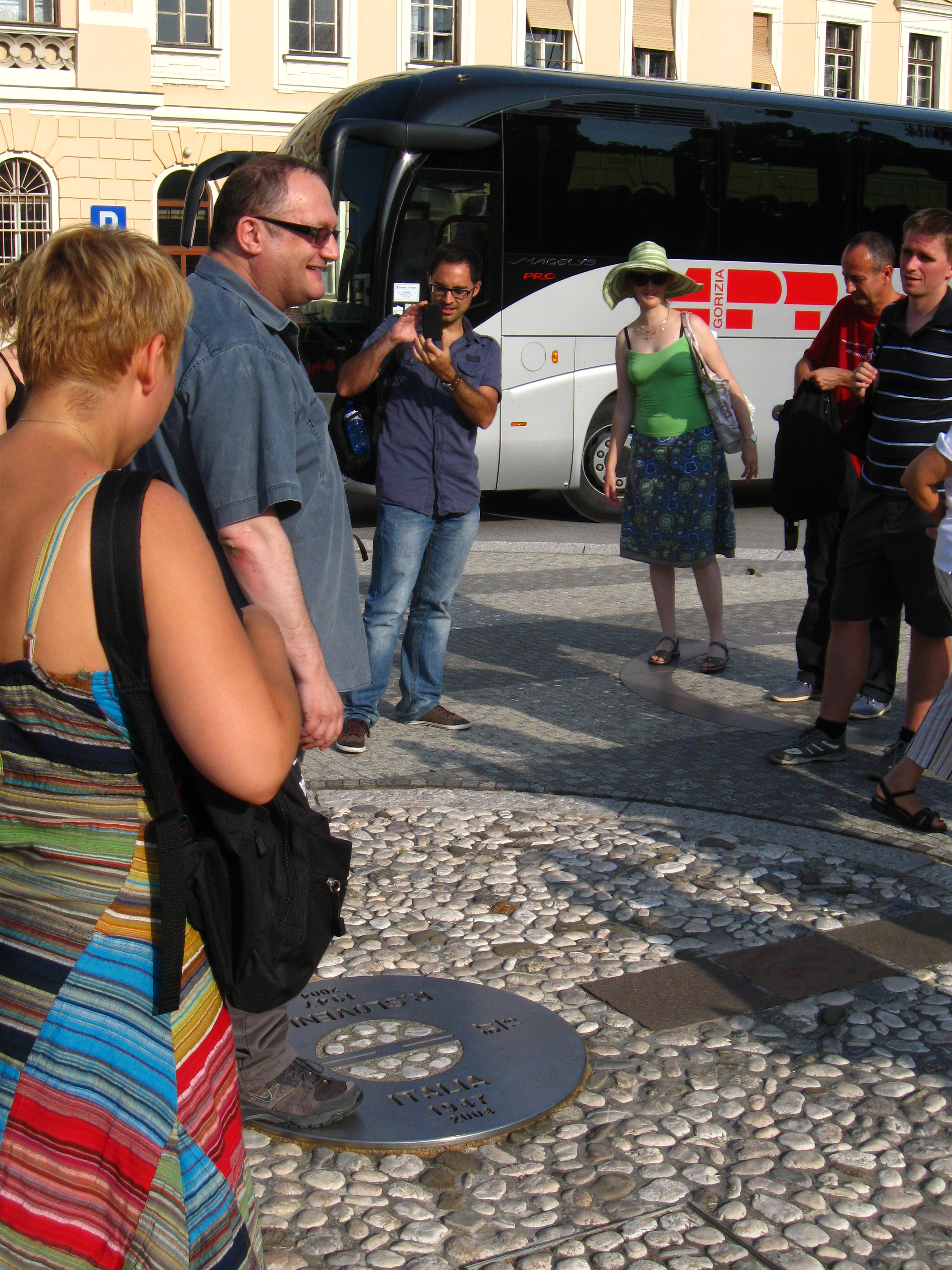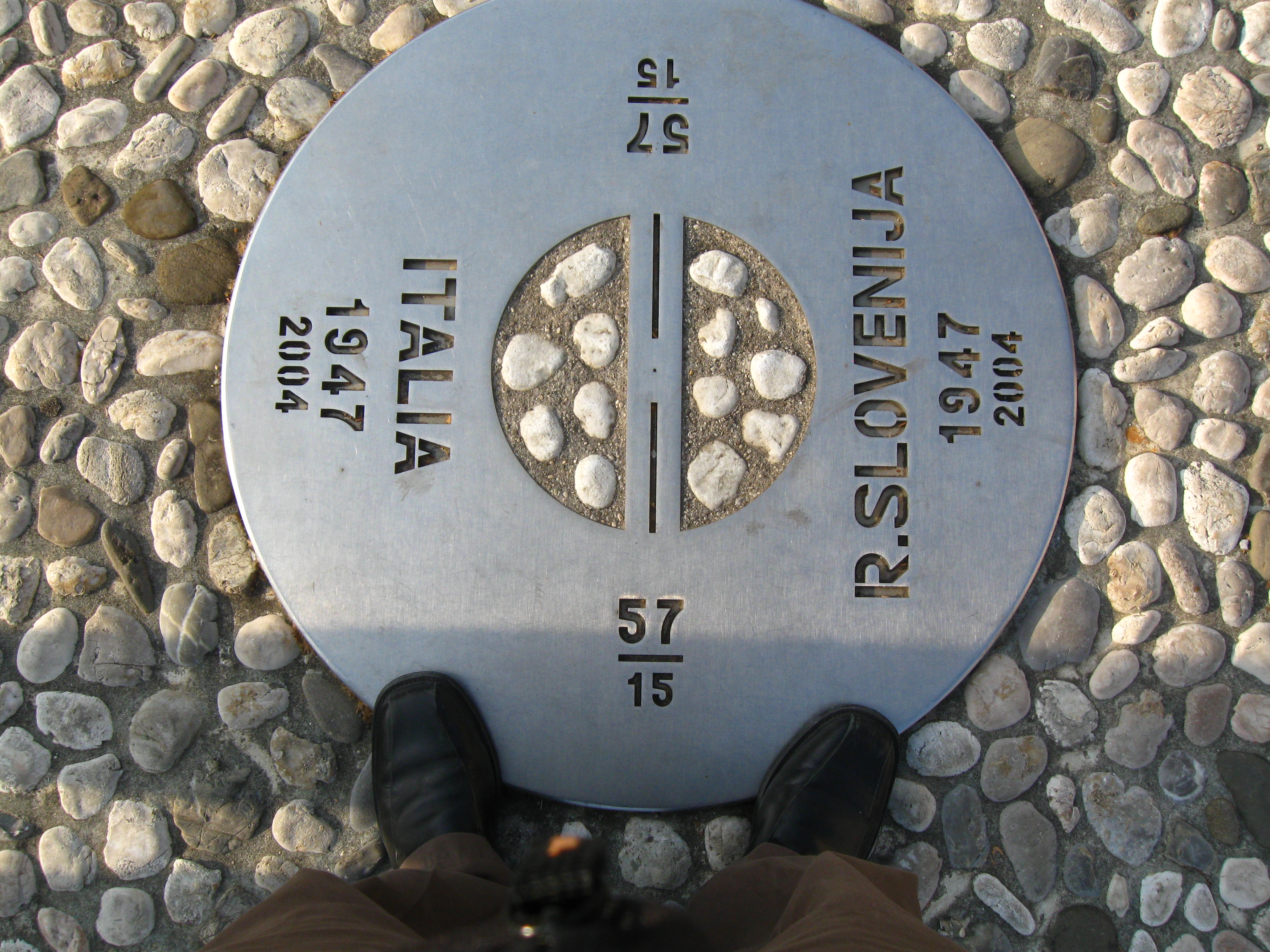By Ryan Holifield
Some borders are easier to cross than others. This is true of both countries and disciplines, as I and my colleagues Timothy Ehlinger and Manu Sobti have learned in our experience as collaborators on the first Center for 21st Century Studies Transdisciplinary Challenge Grant. During our sojourn in Trieste, Italy this summer for the International Geographic Union’s third Borderscapes conference—for which we organized a paper session and presented papers on our research in progress—I had the opportunity both to sample a diverse array of experiences in international border crossing and to reflect on our ongoing exercise in transdisciplinary border crossing.
Part of the conference was a field trip to the Italy-Slovenia border between the twin cities of Gorizia and Nova Gorica. Just under a century ago, this border lay along the Italian front of World War I; half a century ago, it constituted part of the Iron Curtain separating Yugoslavia from Western Europe. Now, because Slovenia joined the Schengen District in 2007, geographer and prominent border scholar David Newman can stand astride it and pose for pictures (see below).

For a contrasting experience, after the conference was over, I took an overnight side trip by bus to Istria in Croatia, a short drive to the south from Trieste. Croatia remains outside the Schengen district, and border controls remain in place. I had a moment of panic when the immigration official asked me why I had no stamp in my passport from Italy. I explained (as he shook his head and sighed) that the Italian official had merely glanced at my passport, without asking me any questions at all. However, I ultimately gained entry by showing him my flight itinerary. A group of young Belgian students on the bus who had rented a Croatian villa for a weeklong holiday were not so fortunate. One of them had been the victim of a theft the day before, and the border guards would not let him through without a passport or police record. We had to return to a nearby small town in Slovenia to deposit the unfortunate group, all of whom had undoubtedly grown up accustomed to passing freely across Schengen borders.
Meanwhile, Tim, Manu, and I continue to grapple with the varying porosities among  disciplinary and subdisciplinary borders. At the most basic level, Tim is a physical scientist, Manu a humanist, and I a social scientist; however, I think it’s safe to say that we’re all border-crossers at heart, even within our own disciplines. We could debate about which disciplinary borders are the most difficult to cross, I suppose, but in my experience crossing the divide between physical sciences and humanities would appear to be the biggest challenge. In the social sciences, some of us gravitate toward the quantitative methods and models favored by the physical sciences, while others of us share with the humanists a predilection for social theory, textual and visual analysis, narratives, and the like.
disciplinary and subdisciplinary borders. At the most basic level, Tim is a physical scientist, Manu a humanist, and I a social scientist; however, I think it’s safe to say that we’re all border-crossers at heart, even within our own disciplines. We could debate about which disciplinary borders are the most difficult to cross, I suppose, but in my experience crossing the divide between physical sciences and humanities would appear to be the biggest challenge. In the social sciences, some of us gravitate toward the quantitative methods and models favored by the physical sciences, while others of us share with the humanists a predilection for social theory, textual and visual analysis, narratives, and the like.
What does transdisciplinary research—research designed to cross disciplinary borders—mean, then? We have found it useful to draw on the distinction that some have made among multidisciplinarity, interdisciplinarity, and transdisciplinarity. Multidisciplinarity implies researchers from several disciplinary perspectives working together, but leaving their borders completely intact. Interdisciplinarity frequently refers to research in which several disciplines come together, but typically under the “umbrella” of one of the disciplinary partners. Such research (still common in many collaborative grant programs) privileges the epistemologies, methodologies, and theories of the “sovereign” partner, while requiring the others to compromise. In contrast, transdisciplinary research actively seeks to cross disciplinary borders and create genuinely new approaches. This is, we have discovered, even more difficult than it sounds. However, it has been helpful for us to conceive of the goal of transdisciplinarity not so much as a new conceptual framework or theoretical model, but rather as an iterative, dialogical process of mutual learning. We are fortunate to have another year to continue this process, as we work on our research and prepare for a C21 symposium in the spring of 2012.
As a final reflection, I should note that one of the key distinctions between contemporary and “classic” approaches to research on borders—at least within geography and the social sciences—has been a shift away from thinking of borders as static and passive lines toward conceiving them as dynamic and performative in their own right. Borders and boundaries, if we consider them not only as physical infrastructures and lines on maps but as entities with multiple registers (Rob Shields classifies them suggestively as actual, virtual, abstract, and probable), both change and have effects. The disciplinary borders along whose edges we are working are certainly having effects on the three of us, and these effects will undoubtedly constitute another theme we will develop in the coming year’s work of collaboration.
[Ryan Holifield is an Assistant Professor in the Geography Department here at UWM. In addition to his work on the Transdisciplinary Challenge project he describes above, he studies environmental justice; Urban environmental governance; Actor-network theory, urban political ecology, and critical geographic theory. You’ll be able to hear more about his work at the Transdisciplinary Challenge Symposium this spring]






